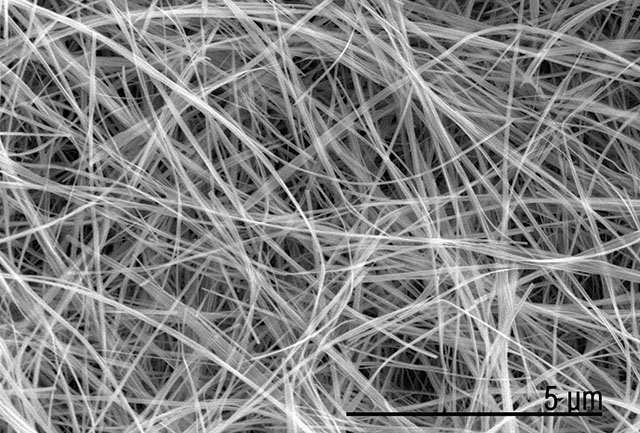Nanofiber processing becomes serendipitously easier
Animesh Kundu was doing research for his Ph.D. thesis when he inadvertently came upon a new and more efficient method of growing titanium oxide-based nanofibers.
In an effort to develop new strategies for processing ferroelectric thin films, Kundu added organic salts to stabilize the material. What he ended up with, however, were long (a few hundred microns) and ultrathin (less than 100 nm) fibers with a unique rectangular cross-section, as opposed to the circular cross-section typical of nanofibers.
“I realized these were oxide nanofibers, and that they represented an entire field of their own to explore,” says Kundu, now a research scientist at the Center for Advanced Materials and Nanotechnology.
Current methods of processing titanate nanofibers require multiple steps and take 50 to 120 hours. Kundu’s method requires a single step and a mere two to eight hours.
“I stumbled onto this,” he says. “It was a complete accident, and really serendipitous.”
With help from Lehigh’s Office of Technology Transfer, Kundu patented the technology. The invention earned a National Innovation Award at the 2014 TechConnect World Conference and Expo in Washington, D.C.
Titanate- and other oxide-based nanofibers have applications in solar cells and lithium ion batteries, as antimicrobial agents, and more.
Kundu grows the titanate nanofibers in water pressure-heated to 120 to 150 degrees Centigrade. “The growth of the nanofibers is similar to the way minerals underwater are formed in hydrothermal conditions,” he says.
The nanofibers contain titanium oxide powder, sodium hydroxide and other agents. Their composition can be tuned for specific applications.
At the TechConnect conference, a Nike representative suggested that Kundu weave the titanate nanofibers into antimicrobial fabrics. It’s a promising idea, he says.
“I’m hoping to develop an application to bring more value to the nanofibers beyond lithium ion batteries. I have to find my own niche for this material.”
Posted on:


